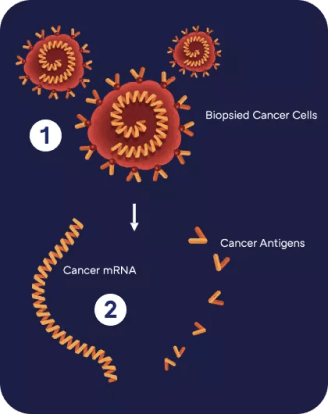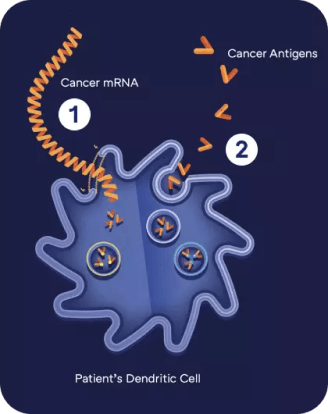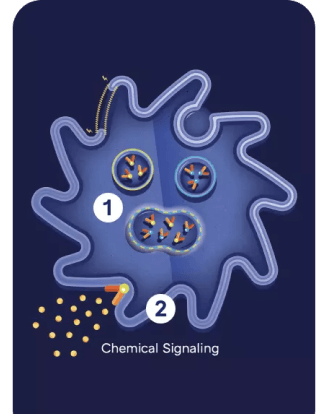
Only “Double-Loading” dendritic cells resulted in a genetic shift towards Th1 immunity, which also included CTLA-4 down regulation.
A New Understanding of
The Immune System
While working as a research scientist in the Texas Medical Center, Dr. Will Decker discovered that dendritic cells detect and initiate Th1 immunity against viral threats after dendritic cells confirm matching antigens on MHC Class 1 and 2.
Leveraging this discovery, Dr. Decker developed a new dendritic cell vaccine. One that loads a patients cancer antigens onto MHC Class 1 and 2,, which subsequently results a powerful and natural immune response targeting a patient’s cancer.

The higher concentration of Interferon Gamma correlates to more "red spots" in the ELISpot Wells. As can be seen above, the anti-tumor activity of Diakonos' treatment is significantly stronger than the existing Dendritic Cell Treatments.
Creating Significant
Killer T Cell Activity
Initial attempts at dendritic cell vaccines, tried to load tumor antigens on MHC Class 1 (mRNA) or MHC Class 2 (lysate). These attempts unknowingly failed to initiate the required Th1 to make dendritic cell vaccines effective against cancer.
In comparison, “double-loading” the dendritic cells initiates powerful Th1 immunity with corresponding killer T cell activation.
Understanding the Process of
“Double-Loading”
Working Synergistically with the
Immune System
Diakonos' DCV is a multi-step process that harnesses the patient’s natural immune response, mimicking the way it fights off viral infections to target and eliminate cancer cells. Each step of Diakonos’ DCV protocol is differentiated from other DCV’s and has robust IP protection.
1. Patient Cell Collection & Processing
Process.
A surgical resection obtains a sample of the tumor tissue, followed by apheresis to collect patient monocytes.
Rationale.
Patient tumor samples allow for the complete antigen profile of the tumor and isolated mRNA is amplified to replicate viral infection.
2. Dendritic Cell “Double-Loading”
Process.
Patient’s dendritic cells are ”double-loaded” via external lysate presentation and mRNA through electroporation.
Rationale.
This initiates replicates a TH1, anti-viral immune response that results in Killer T cell activation and stimulation of immunological memory.
3. Targeted Dendritic Cell Administration
Process.
Dendritic Cells are administered 3x to the patient via a standard US-guided injection by an interventional radiologist.
Rationale.
Targeting deep cervical lymph nodes allows for a faster, more robust immune response than traditional IV or IM injections.
4. Th1, Anti-Viral Stimulation
Process.
Interferon is then administered the subsequent day after each injection.
Rationale.
This further stimulate a TH1, anti-viral immune response that augments Killer T cell targeting and immunological memory.



